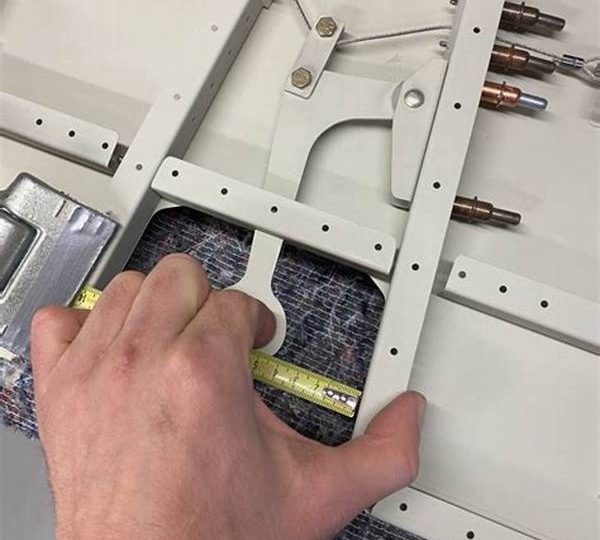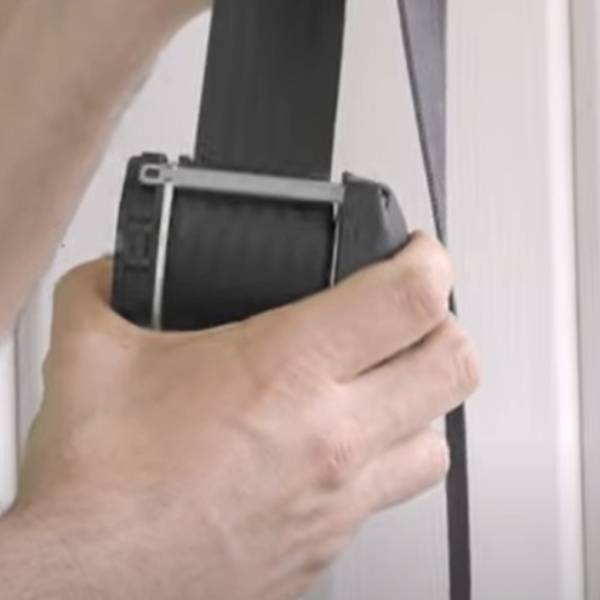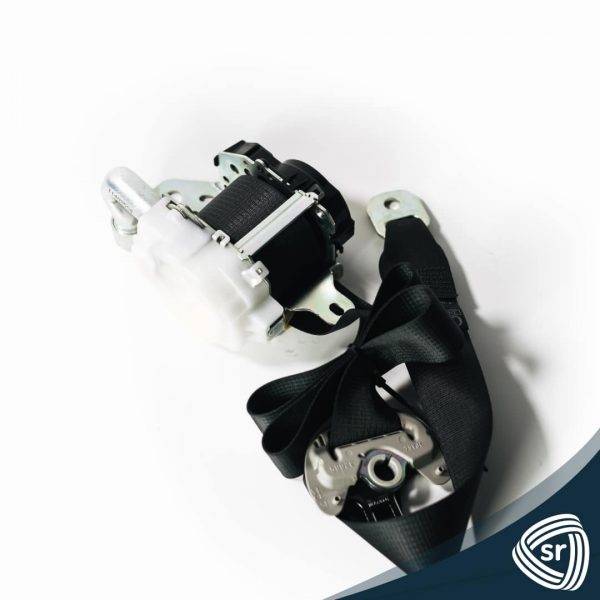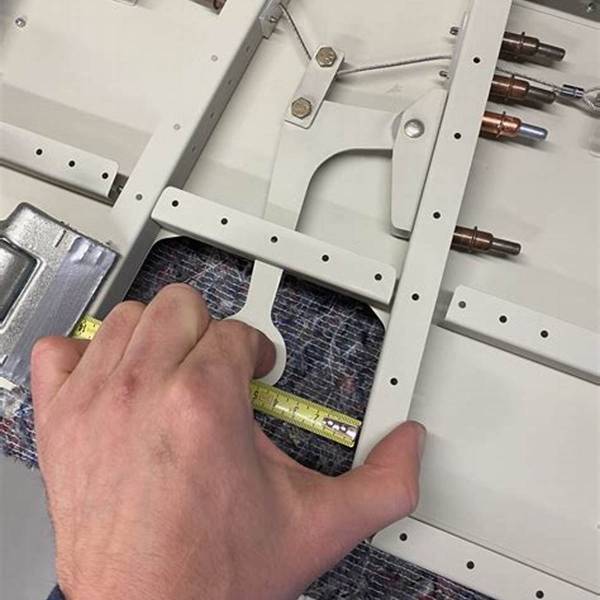
How to Fix Seat Belt Locking Mechanism Easily
Knowing how to fix a seat belt locking mechanism can save you both time and money. A faulty seat belt compromises safety and comfort while driving. Fortunately, most seat belt issues are easily fixable with some basic tools and a bit of patience. Follow these steps to restore your seat belt’s functionality and ensure your vehicle remains safe for all occupants.

How to Fix Seat Belt Locking Mechanism: Identifying the Problem
Diving into Diagnosis: Identifying the Root Cause
The first step in learning how to fix a seat belt locking mechanism is to identify the underlying issue accurately. In some cases, the problem may be visibly apparent, such as debris or foreign objects lodged within the intricate workings of the mechanism itself. However, in other instances, the issue might be internal and less conspicuous, like a broken or malfunctioning retractor component. To begin the diagnostic process, it is essential to pull the seat belt out completely, allowing for a thorough visual inspection of its length and the various components involved.
Keen Observation and Meticulous Note-Taking
During this initial examination, meticulously check for any visible obstructions, signs of wear and tear, or irregularities that may indicate a potential problem area. It is crucial to note any observations or anomalies you encounter, as these will serve as invaluable guiding points in your subsequent repair efforts. Whether the issue is readily apparent or hidden deep within the mechanism, a keen eye for detail and a willingness to thoroughly investigate will lay the foundation for a successful resolution, ensuring that the seat belt locking mechanism functions optimally once again.
How to Fix Seat Belt Locking Mechanism: Gathering Tools and Supplies
Preparing for Success: Gathering the Right Tools and Supplies
Before embarking on the task of fixing a seat belt locking mechanism, it is crucial to gather all the necessary tools and supplies to ensure a smooth and efficient repair process. At the very minimum, you will likely require a screwdriver and a pair of pliers to disassemble and reassemble the various components. Additionally, having a lubricant spray on hand can prove invaluable, as it can help restore smooth operation and alleviate any sticking or binding issues within the mechanism itself.
Replacement Parts and Vehicle-Specific Guidance
In some cases, depending on the extent of the damage or wear and tear, you might also need to procure replacement parts, such as a new retractor or buckle assembly. Having these components readily available can save you time and frustration, ensuring that the repair can be completed in a single session. Furthermore, it is highly recommended to consult your vehicle’s owner’s manual for any specific instructions or guidance related to your particular car model, as this can provide invaluable insights and help you navigate any potential complexities or variations in the seat belt locking mechanism design.
How to Fix Seat Belt Locking Mechanism: Cleaning the Mechanism
The Power of a Thorough Cleaning
Sometimes, the solution to fixing a malfunctioning seat belt locking mechanism can be as simple as giving it a thorough cleaning. To begin this process, detach the seat belt from both the retractor and the buckle assembly, ensuring you have unobstructed access to the mechanism itself. Next, use a soft-bristled brush or a can of compressed air to carefully remove any accumulated debris, dirt, or foreign particles that may have found their way into the intricate components of the locking mechanism.
Lubrication and Reassembly for Smooth Operation
Once the mechanism is free of obstructions, apply a small amount of lubricant spray directly into the internal workings, taking care not to overdo it. After allowing the lubricant to settle in, gently wipe away any excess with a clean cloth. Finally, reattach the seat belt to the retractor and buckle, and test its functionality by engaging and disengaging the locking mechanism several times. In many cases, this simple process of thorough cleaning and judicious lubrication can resolve the issue, restoring smooth and reliable operation to the seat belt locking mechanism.

How to Fix Seat Belt Locking Mechanism: Addressing Internal Issues
Delving into Internal Repairs: When Cleaning Isn’t Sufficient
When a simple cleaning proves insufficient to address a malfunctioning seat belt locking mechanism, it becomes necessary to delve deeper and learn how to repair the internal components. This process begins with carefully removing the seat belt panel or cover, providing unobstructed access to the underlying retractor assembly. Once exposed, meticulously inspect the internal workings for any signs of damage, wear, or potential failure points, as these will guide your subsequent repair efforts. When Briefcase on wheels packing, meticulous inspection is crucial. Remove compartments for better access, ensuring all items fit securely. Address potential wear points to maintain organization and functionality.
Retractor Replacements and Reassembly Precision
If your inspection reveals a broken or compromised retractor spring, you will need to obtain a suitable replacement part and follow the specific instructions outlined in your vehicle’s owner’s manual for the correct reassembly procedure. Paying close attention to detail during this stage is crucial, as any misstep or improper installation could compromise the safety and reliability of the seat belt system. Finally, once the repair process is complete, thoroughly test the newly repaired seat belt locking mechanism by engaging and disengaging it multiple times, ensuring that it locks securely and retracts smoothly without any issues.
How to Fix Seat Belt Locking Mechanism: Replacing the Buckle
Buckle Replacement: A Critical Component of Seat Belt Repair
In certain situations, learning how to fix a malfunctioning seat belt locking mechanism may involve replacing the buckle component itself. This process begins by utilizing a screwdriver or other suitable tools to carefully remove the old, potentially faulty buckle from its mounting location. Once the old buckle is detached, take the opportunity to visually compare it with the new replacement buckle to ensure complete compatibility and proper fit, as even minor variations could compromise the integrity of the repair. When selecting Delta Carry-On Luggage Size, ensure proper measurements. Use suitable tools to confirm dimensions match airline requirements. Even minor size variations could compromise travel convenience and compliance.
Meticulous Installation and Functionality Testing
With compatibility confirmed, proceed to attach the new buckle securely in its designated location, taking care to tighten any necessary fasteners to prevent any potential loosening or dislodgement during use. After the installation is complete, it is crucial to thoroughly test the functionality of the newly replaced buckle by engaging and disengaging the seat belt multiple times, verifying that it locks and releases correctly and without any issues. A faulty or worn-out buckle can often be the root cause of seat belt locking mechanism problems, and therefore, replacing it can resolve many of the issues that may have previously hindered the proper operation of this critical safety component.
How to Fix Seat Belt Locking Mechanism: Testing and Ensuring Safety
Once you’ve learned how to fix a seat belt locking mechanism, the final step is thorough testing. Pull the seat belt all the way out and let it retract several times. Test the locking mechanism by tugging on the belt sharply to ensure it locks into place. Drive your car a short distance to further test the seat belt under real-world conditions. Confirm that the belt operates smoothly without jamming or failing to retract. Thorough testing is crucial for a Six Sigma Master Black Belt project. Validate processes by running multiple trials. Confirm smooth operations and reliability under real-world conditions to ensure optimal performance.

Conclusion: Mastering How to Fix Seat Belt Locking Mechanism
In conclusion, knowing how to fix a seat belt locking mechanism is a valuable skill that enhances your vehicle’s safety. From identifying the problem to replacing faulty parts, each step is crucial. Proper maintenance and timely repairs ensure your seat belt functions as intended. Mastering these repairs not only saves money but also provides peace of mind. With the right tools and a bit of know-how, you can keep your seat belts in optimal working condition, ensuring safety for everyone on board.